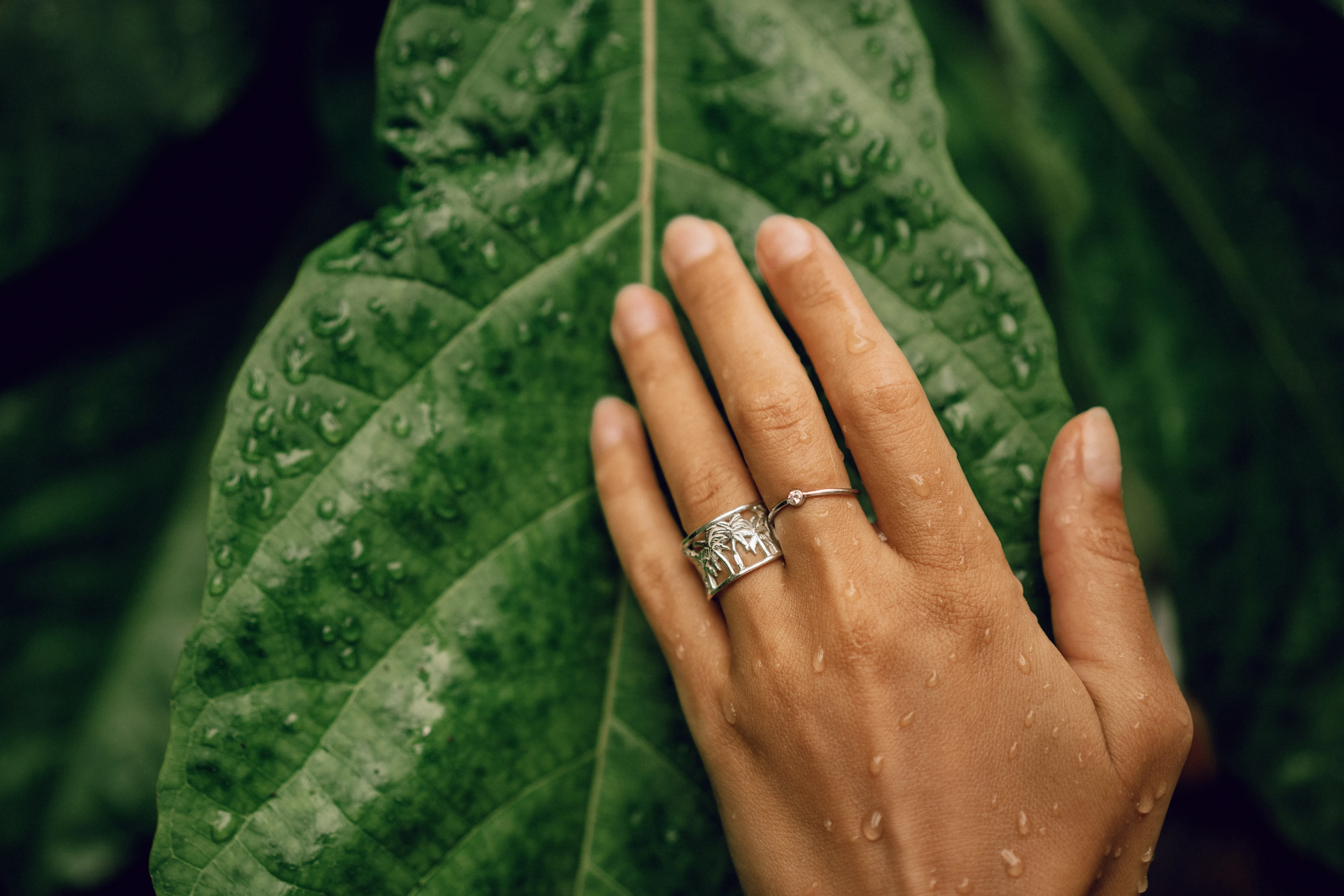Round vs other shapes Comparison Guide
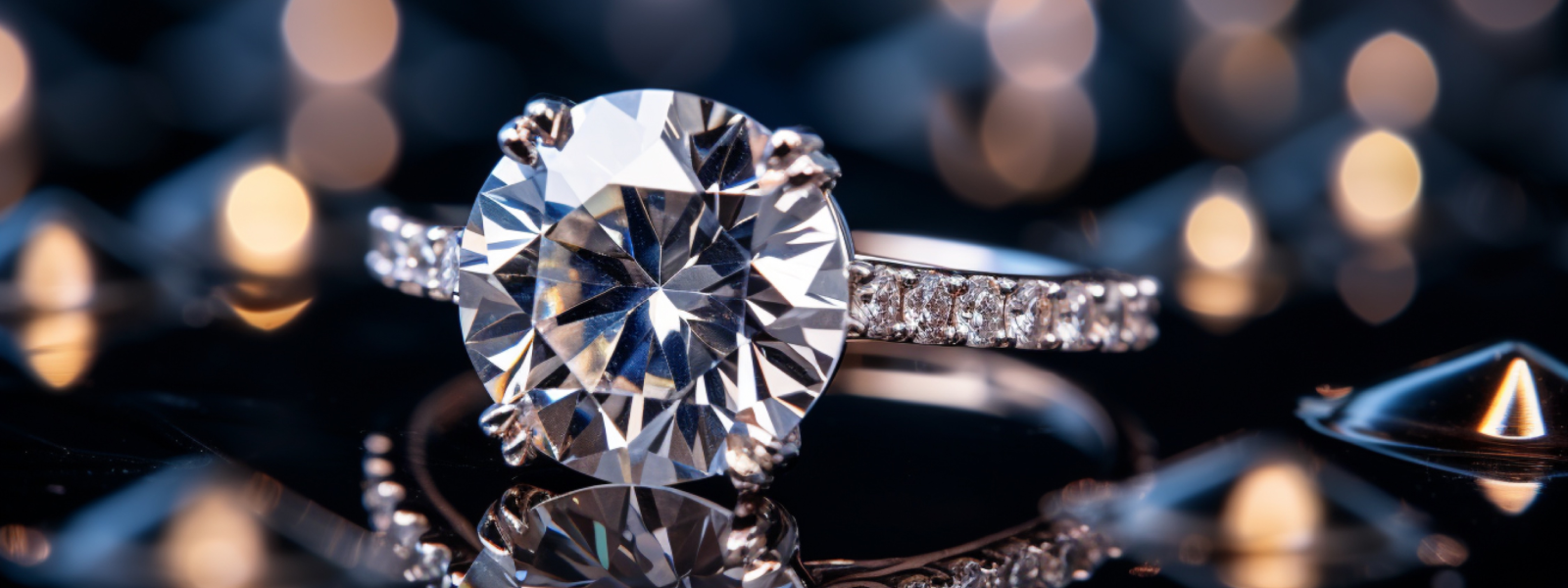
The world of jewelry is a dazzling tapestry of artistry, where each diamond cut tells its own story of elegance and allure. Every cut is a crafted masterpiece, designed to reveal the diamond's full brilliance, sparkle, and depth of color. Step into the enchanting realm of diamonds with us, and explore the beauty of each unique shape to discover the one that perfectly captures your style.
The cut of a diamond is what makes it a true icon of elegance—a dazzling piece of wearable art. While the 4 Cs (Cut, Carat, Color, and Clarity) shape the value of a diamond, it’s the cut that truly brings out its magic. The way a diamond is cut, or how each facet is precisely angled and arranged, unlocks the stone’s potential for brilliance and shine. This craftsmanship is what turns a diamond from a raw mineral into a fashion masterpiece, setting it apart as a symbol of luxury and sophistication.
In the world of high jewelry, a well-executed cut transforms light into an enchanting dance of color and sparkle. This interplay creates two vital elements in a diamond’s allure: fire, or the rainbow-colored flashes, and scintillation, the captivating sparkle that draws the eye. Even if a diamond has exceptional clarity and color, a poorly cut stone will lack life and vibrancy. It’s like fashion without fit or style—the essence simply falls flat.
Anatomy of a Diamond
A diamond, captivating in its radiance, is crafted with precise anatomy that shapes how it catches and reflects light. Each facet and angle is designed with intention, creating the enchanting sparkle, brilliance, and fire that make diamonds iconic in the world of fashion. Let’s explore the essential elements that define a diamond’s cut and elevate its beauty
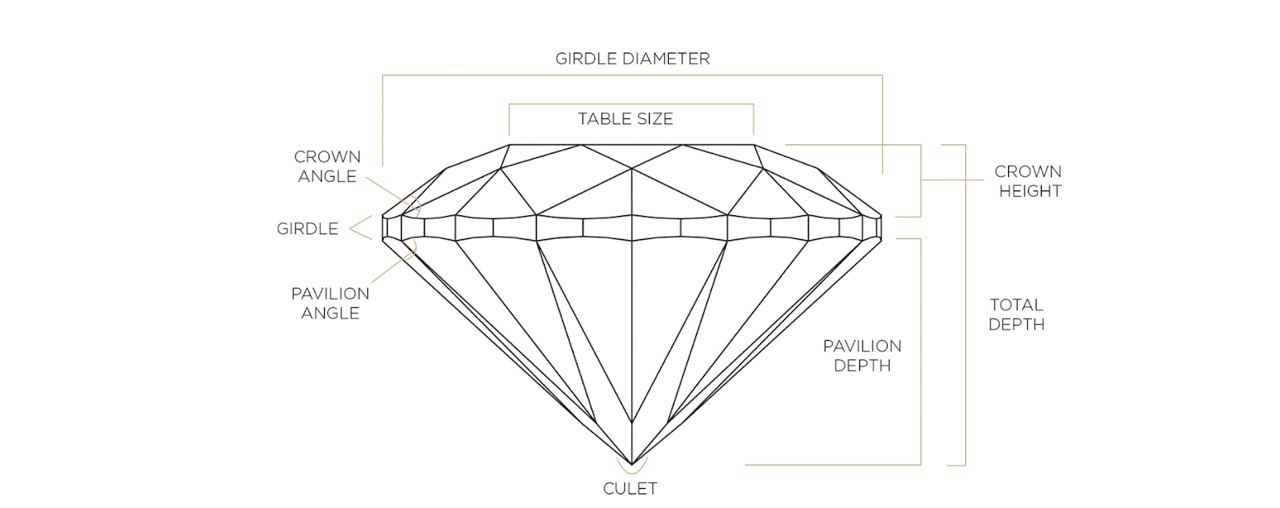
- Table: The flat, topmost surface of the diamond is known as the table. It’s the largest facet and serves as the main entry point for light. A well-proportioned table maximizes the diamond’s brilliance, creating that mesmerizing, almost hypnotic glow.
- Crown: Positioned just below the table, the crown consists of angled facets that direct light into the heart of the diamond. These facets contribute to the diamond’s fire—the captivating flashes of color that shimmer as the diamond moves, giving it an extra layer of sophistication and charm.
- Girdle: The girdle is the narrow band that forms the widest part of the diamond. While it may be understated, a finely polished girdle supports the diamond’s shape and structure, framing its beauty and protecting it in a setting.
- Pavilion: Located below the girdle, the pavilion facets play a critical role in the diamond’s sparkle. These facets reflect light back up through the crown, creating scintillation—the captivating sparkle that dances with movement, adding depth and life to the stone.
- Culet: At the very base, the culet is the smallest facet, designed to protect the tip of the diamond. In a fashion context, a diamond with a perfect or near-invisible culet creates a seamless reflection, amplifying the elegance and brilliance that make it a standout.
- Depth: Depth refers to the distance between the table and the culet, or the top and bottom of the diamond. The depth affects how light travels within the stone, influencing its brilliance and sparkle. If the depth is too shallow or too deep, light can escape, making the diamond appear dull. But when expertly proportioned, the depth allows maximum light reflection, creating a dazzling display.
- Facet: Facets are the flat, polished surfaces on the diamond, cut to specific angles to optimize the stone's interaction with light. Every facet serves a purpose, whether it’s to enhance fire, brilliance, or scintillation. The arrangement and precision of facets are the true artistry of a diamond cut, turning the gemstone into a living light show that shifts and changes with every movement.
In the world of diamonds, the cut is everything—it’s the artistry that transforms a stone into a fashion icon. Cut grading is the ultimate measure of how a diamond’s facets interact with light, unlocking its brilliance and ensuring it dazzles from every angle. Here’s a closer look at the elements that define a diamond’s cut grade and their impact on its radiant beauty.
The Key Elements of Diamond Cut Grading
- Proportions: The delicate balance of a diamond’s dimensions, proportions determine how light moves through the stone. When perfectly calibrated, the facets work together to reflect light beautifully, creating an unparalleled sparkle. Think of it as tailoring in fashion—proportions make the fit flawless.
- Symmetry: Precision is everything. Symmetry refers to how well the diamond’s facets align, creating a harmonious and balanced aesthetic. A diamond with impeccable symmetry is like a couture garment: meticulously crafted for perfection, ensuring every angle is striking.
- Polish: A diamond’s surface finish plays a major role in its ability to shine. A flawlessly polished diamond reflects light with pristine clarity, much like the gloss on a luxury patent leather shoe—smooth, refined, and undeniably captivating.
Grading the Glow: From Excellent to Poor
The Experts Behind the Grade
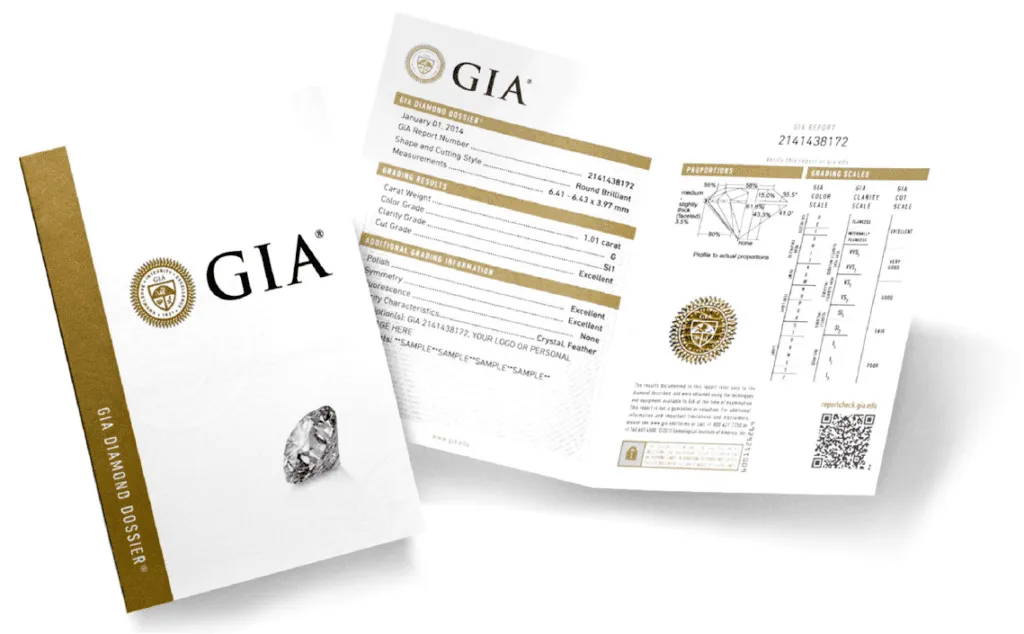
Top grading authorities like the Gemological Institute of America (GIA) and the American Gem Society (AGS) assess cut quality with expert precision. By analyzing how well a diamond returns light to the viewer, these agencies ensure that only the most brilliantly cut stones are deemed worthy of high grades. For the fashion-forward, this guarantees that every diamond purchased is not just beautiful—it’s luminous, bold, and unforgettable.
Whether worn on a ring, necklace, or earrings, a diamond with an Excellent cut grade isn’t just jewelry—it’s a statement of sophistication, crafted to dazzle in the spotlight.
Types of Diamond Cuts
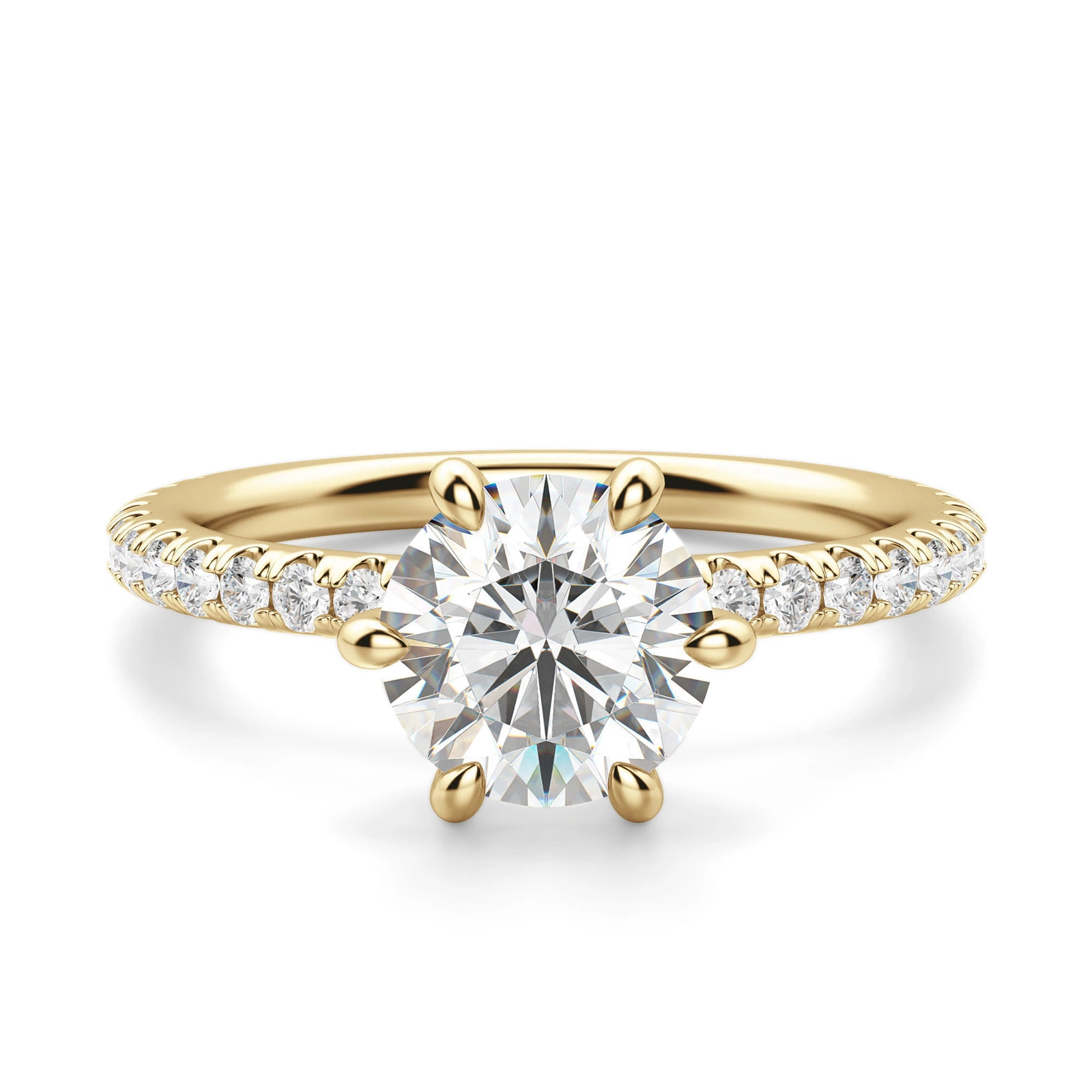
Round Cut Diamond
The round brilliant cut diamond is a true icon in the world of fine jewelry, celebrated for its unparalleled brilliance and timeless appeal. With its flawless circular symmetry and 58 expertly arranged facets, this shape maximizes light reflection, creating a dazzling sparkle that elevates any look.
Why It’s a Fashion Favorite
- Shape & Style: Perfectly round and versatile, it complements everything from classic solitaires to bold modern designs, making it the ultimate go-to for any jewelry piece.
- Light Performance: Its symmetrical facets capture and reflect light brilliantly, delivering unmatched fire and sparkle that steal the spotlight.
- Timeless Appeal: Its classic elegance ensures it remains a staple of sophisticated style.
Considerations
- Cost: Premium brilliance comes at a price, as round cuts are among the most expensive per carat
- Uniqueness: While iconic, its popularity makes it less distinctive compared to more unconventional cuts.
- Imperfection Highlight: Its brilliance can magnify flaws, making clarity even more critical.
Princess Cut Diamond
The princess cut diamond is a modern masterpiece, beloved for its edgy elegance and striking brilliance. As the second most popular diamond shape, it offers a fresh, geometric twist while delivering dazzling sparkle, making it perfect for trendsetters seeking a blend of chic and classic.
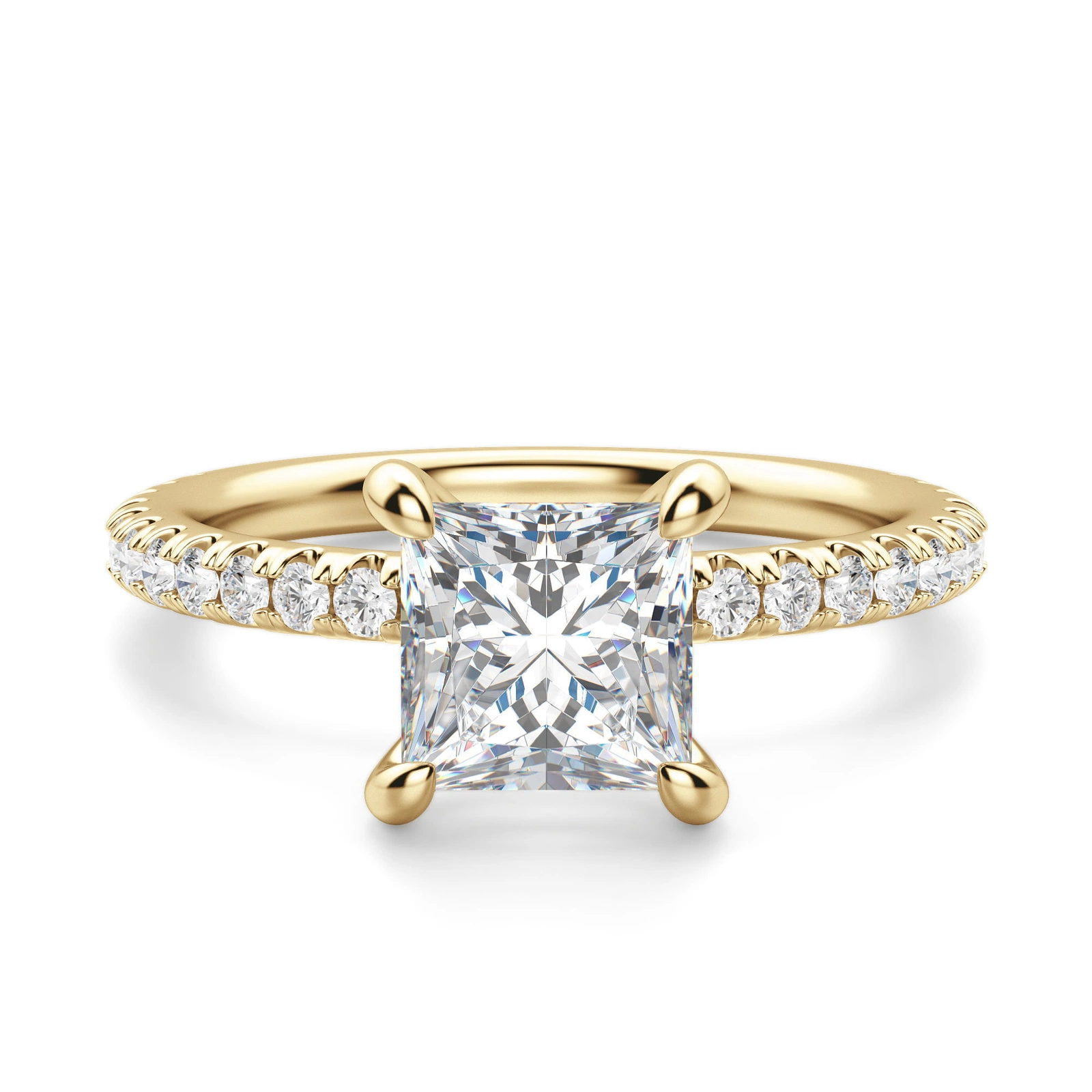
Why It’s a Fashion Essential
- Shape & Style: Square or rectangular with sharp, clean lines, the princess cut offers a contemporary, versatile aesthetic that suits both minimalist and bold designs.
- Light Performance: Its angular brilliance rivals the round cut, with a "crushed ice" sparkle effect that creates intense, scattered light play across its surface.
- Face-Up Appearance: Bold and structured, its sharp corners and symmetrical geometry exude a fashion-forward appeal, ideal for lovers of sleek, modern glamour.
Considerations
- Cost: High brilliance comes at the expense of more rough diamond waste, making it pricier per carat.
- Durability : The pointed corners are delicate and prone to chipping, requiring protective settings for longevity.
- Fire: While brilliantly radiant, it emphasizes white light over colorful flashes, offering less fire than a round cut.
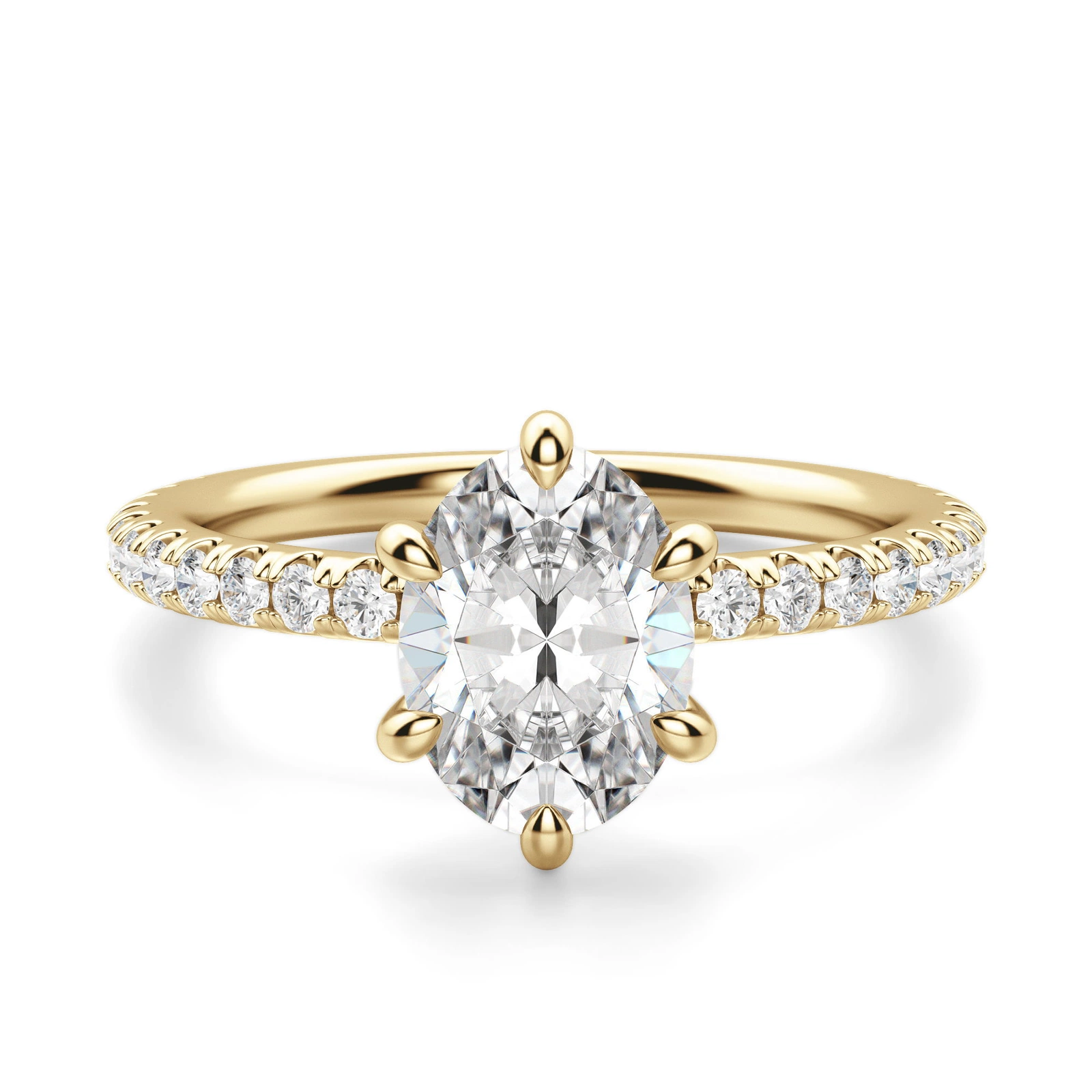
Oval Cut Diamond
The oval cut diamond is a contemporary classic, blending vintage charm with modern sophistication. Its elongated silhouette not only enhances its brilliance but also creates the illusion of a larger size, making it a favorite for those seeking understated glamour with a unique twist.
Why It’s a Fashion Must-Have
- Shape & Style: Gracefully ovular, it offers the brilliance of a round cut with a slimming, elongated shape that flatters the finger. Perfect for lovers of timeless beauty with a modern edge.
- Light Performance: Exceptional brilliance and sparkle, rivaling the round cut. Its elongated facets produce dynamic light play, though the signature "bow-tie" effect may add depth or detract depending on visibility.
- Face-Up Appearance: A seamless fusion of soft curves and elegant symmetry, its larger face-up size enhances its presence, ideal for bold yet graceful designs.
Considerations
- Bow-Tie Effect: The facet pattern often creates a shadow across the center. While some find this distinctive, others may view it as a drawback.
- Durability: Although softer than pointed shapes, the ends of an oval cut still require a secure setting to prevent damage.
Emerald Cut Diamond
The emerald cut diamond is a vision of understated glamour, celebrated for its sleek, architectural appeal. Its step-cut facets and large, open surface create a mesmerizing hall-of-mirrors effect, making it a favorite among those who value clarity and sophistication over sparkle.
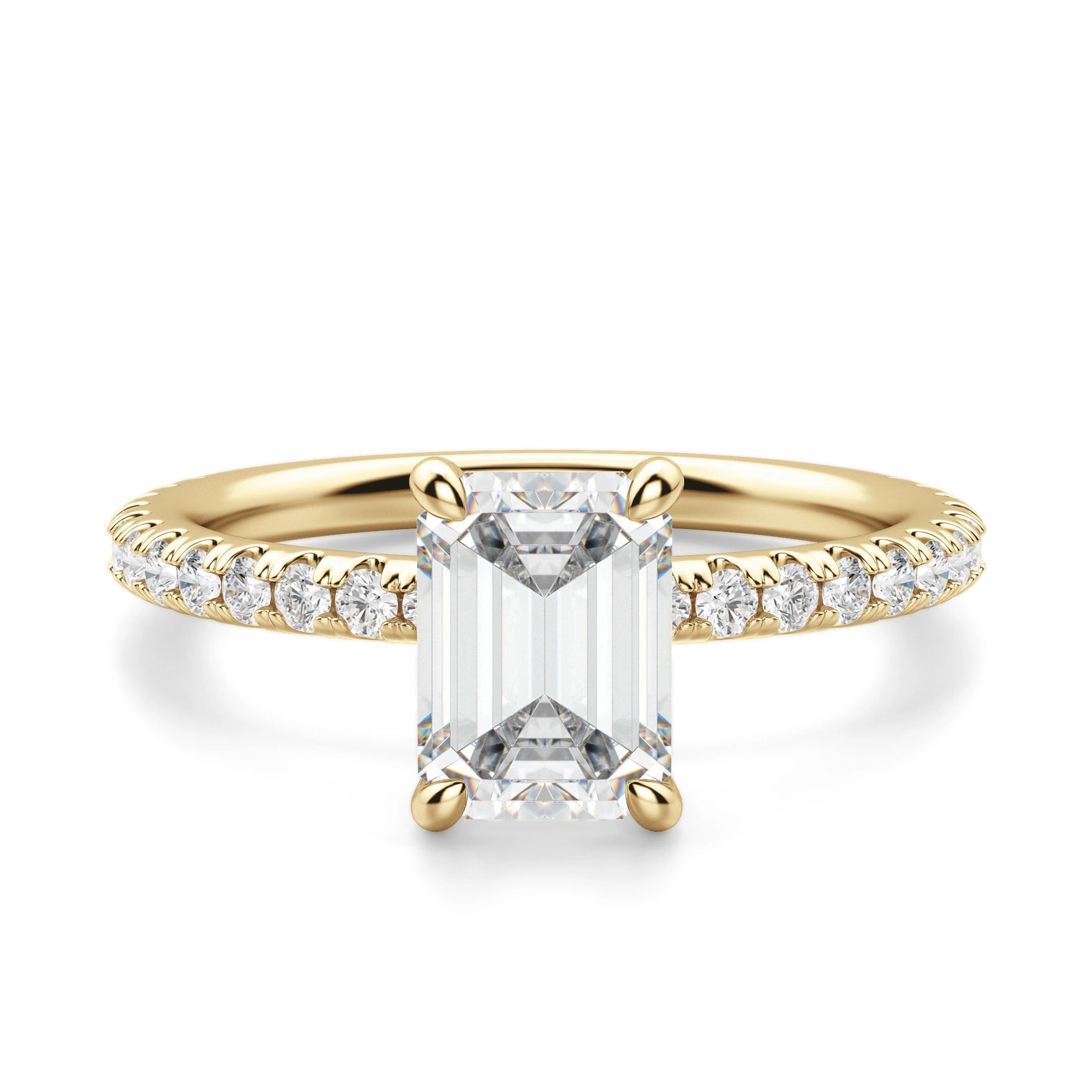
Why It’s a Fashion Icon
- Shape & Style: Rectangular with clean, elongated lines, the emerald cut offers a refined, vintage-inspired elegance that flatters the finger. Perfect for lovers of minimalist, art-deco aesthetics.
- Light Performance: Unlike brilliant cuts, it emphasizes broad, dramatic flashes of white light over scintillation, showcasing the stone’s clarity and color with effortless grace.
- Face-Up Appearance: Its expansive table highlights a diamond’s purity and transparency, exuding quiet luxury. The shape also appears larger than other cuts of the same carat weight, adding to its striking presence.
Considerations
- Brilliance: Less sparkle and scintillation, as it prioritizes clarity and luster over fiery brilliance.
- Clarity Sensitivity: The open table makes inclusions more visible, requiring a high clarity grade for maximum effect.
- Durability: Its edges and corners, though less sharp than other shapes, still require careful setting for protection.
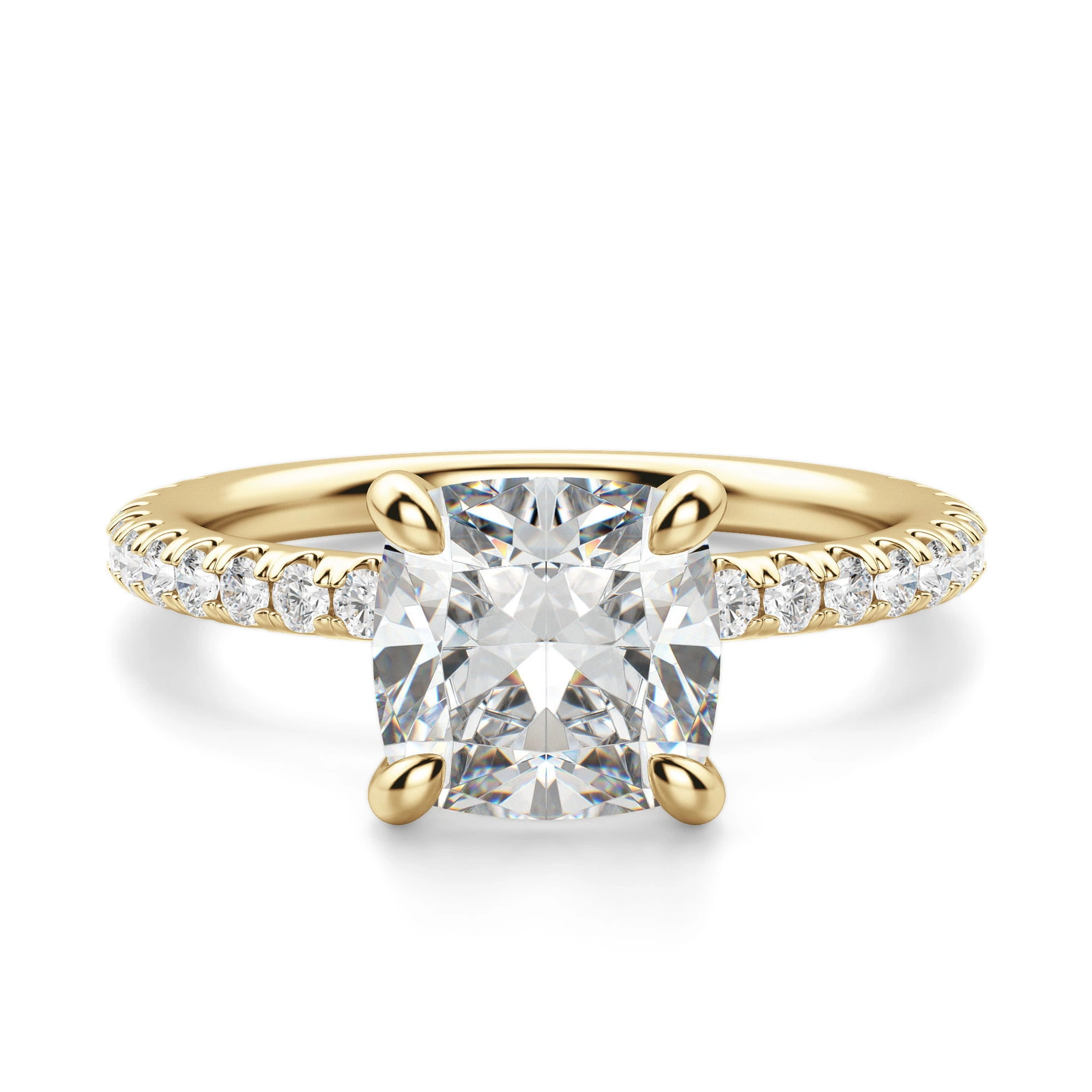
Cushion Cut Diamond
The cushion cut diamond is a timeless classic, blending vintage charm with soft elegance. Its rounded square or rectangular shape, reminiscent of a pillow, has made it a cherished favorite for centuries, exuding romance and individuality.
Why It’s a Fashion Statement
- Shape & Style: With rounded edges and a graceful silhouette, the cushion cut offers a vintage-inspired, romantic look perfect for those who appreciate classic beauty with a unique twist.
- Light Performance: Renowned for its “crushed ice” effect, it sparkles with scattered flashes of light while delivering exceptional fire, creating a warm, glowing radiance.
- Face-Up Appearance: Its softly curved shape gives it a slightly smaller face-up look compared to round diamonds of the same carat weight, but its depth and fire more than compensate for its size.
Considerations
- Brilliance: While radiant, its brilliance may be slightly less than other cuts like the round or princess.
- Durability: Rounded edges are less prone to damage, but a secure setting is essential to protect against potential chipping.
Marquise Cut Diamond
The marquise cut diamond is a bold and regal choice, with its distinctive shape that commands attention. Often referred to as the "navette" cut, it offers a unique alternative to round and princess cuts, making it perfect for those who desire individuality and a touch of vintage glamour.
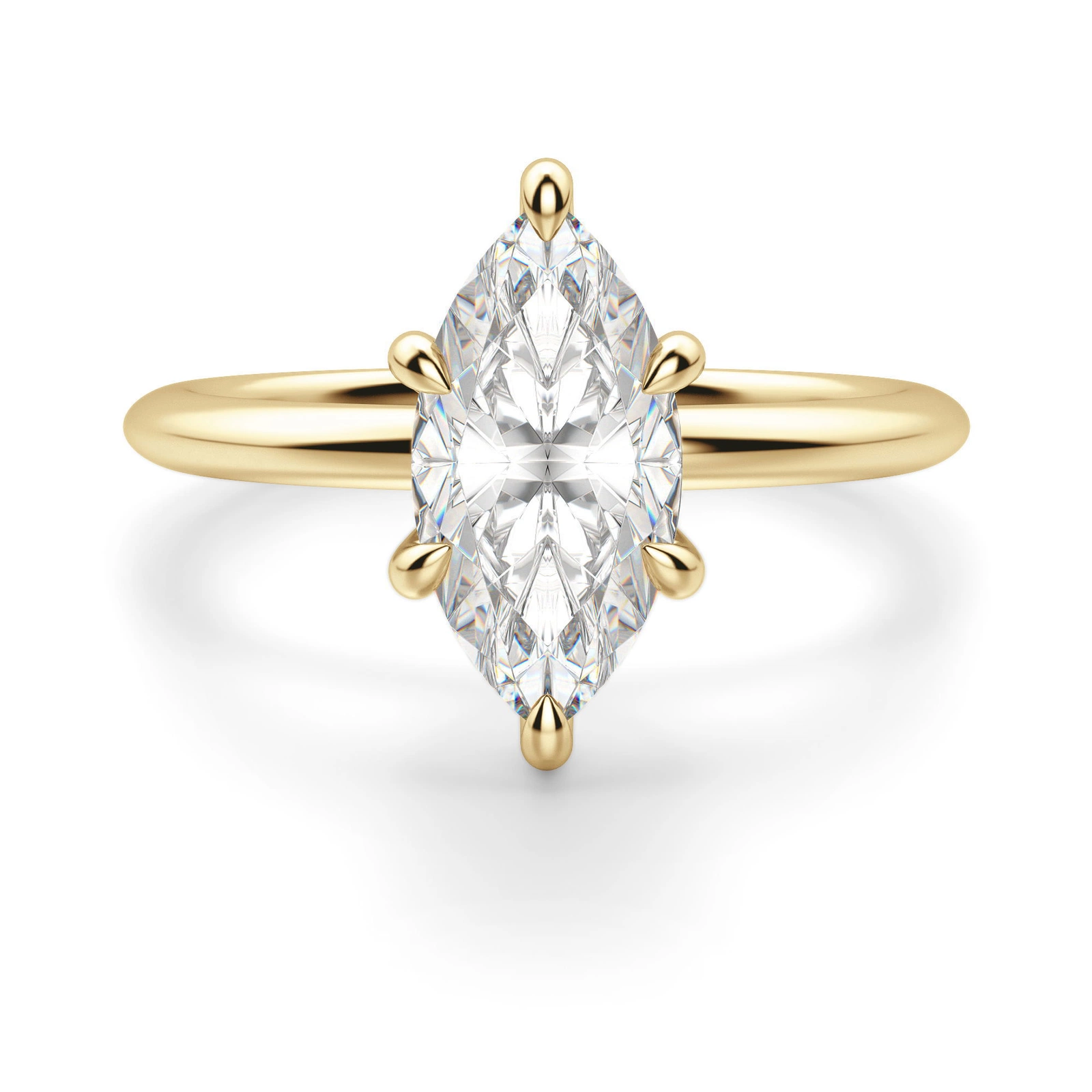
Why It’s a Fashion Favorite
- Shape & Style: With its elongated, boat-like silhouette, the marquise cut is both striking and elegant, offering a vintage-inspired yet contemporary look for those who love bold statements.
- Light Performance: Reflecting light brilliantly, the marquise cut’s 58 facets create an exceptional level of sparkle and brilliance, ensuring all eyes are on you.
- Face-Up Appearance: Its large surface area gives the illusion of a bigger diamond, making it stand out among other shapes of the same carat weight—perfect for those who love a statement piece.
Considerations
- Durability: The sharp pointed ends are prone to chipping and require a secure setting to protect the diamond.
- Bow-Tie Effect: Similar to other elongated cuts, the marquise may display a "bow-tie" effect, where the center darkens, detracting from its brilliance if too prominent.
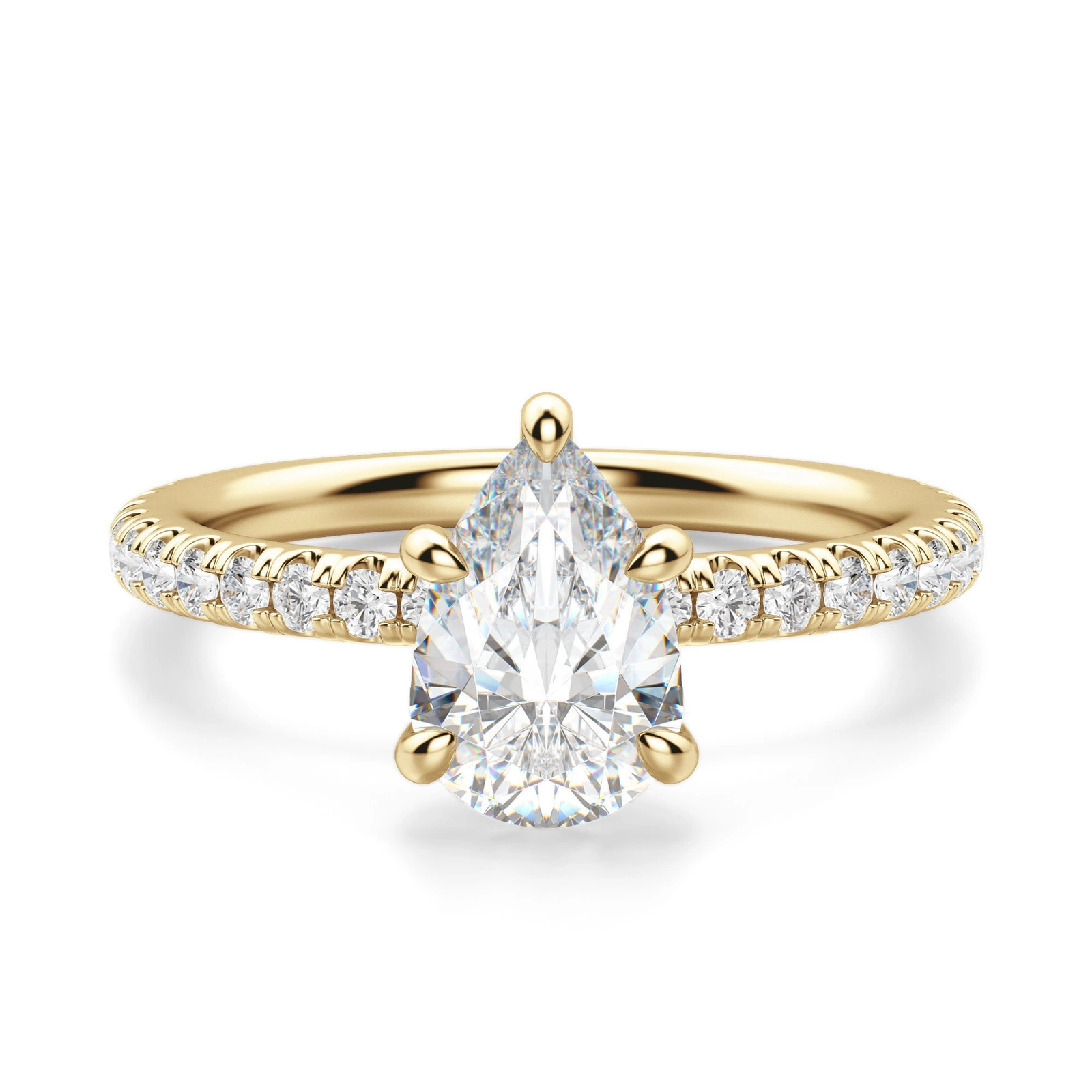
Pear Cut Diamond
The pear cut diamond is a stunning fusion of classic and contemporary, combining the brilliance of a round cut with the elegance of a teardrop shape. It’s beloved for its flattering, elongated form that adds unique charm and versatility, making it a go-to choice for various jewelry designs.
Why It’s a Fashion Favorite
- Shape & Style: With one rounded end and a pointed tip, the pear cut delivers a graceful, teardrop silhouette that exudes softness and sophistication. It’s ideal for those who appreciate a perfect balance of timeless beauty and individuality.
- Light Performance: Offering excellent brilliance like the round cut, the pear’s elongated shape maximizes sparkle, drawing attention and flattering the finger with its shimmering allure.
- Face-Up Appearance: Its unique shape and rounded facets create a striking, graceful look that enhances both brilliance and visual impact. The balance between the round and pointed ends provides an elegant, soft appearance.
Considerations
- Brilliance: While it offers good brilliance, a shallow cut can diminish sparkle, making precision in the depth and cut crucial for maximum brilliance.
- Bow-Tie Effect: Like other elongated shapes, the pear cut can display a "bow-tie" effect, where the center appears dark. This is less noticeable with a high-quality cut.
- Imperfection Highlight: Its brilliance can magnify flaws, making clarity even more critical.
Price Comparison
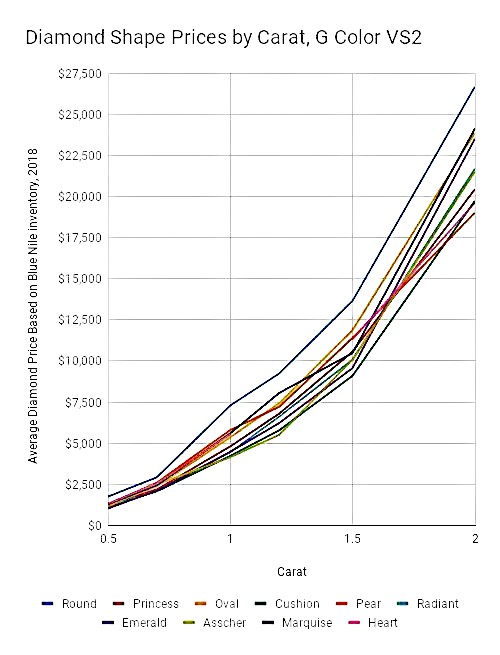
Choosing the perfect diamond shape is a blend of personal style, budget, and brilliance preferences. Round cuts lead in brilliance and timeless appeal but are the most expensive. Fancy shapes like princess, oval, and cushion cuts offer unique aesthetics and lower costs, with princess cuts being modern and versatile, ovals flattering with elongated charm, and cushions radiating vintage elegance. Emerald, marquise, and pear cuts bring distinct individuality, with emeralds emphasizing clarity, marquises delivering bold sophistication, and pears combining brilliance with a graceful teardrop design. Each shape tells its own story, ensuring a diamond for every taste and occasion.

